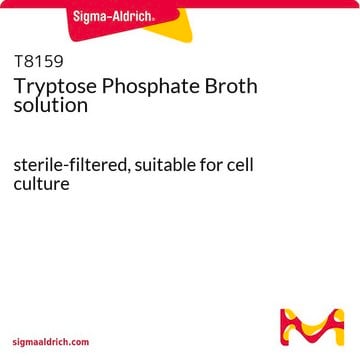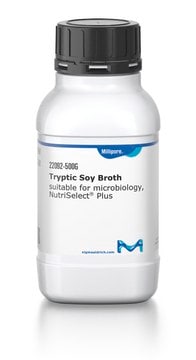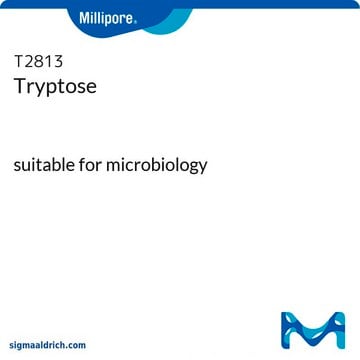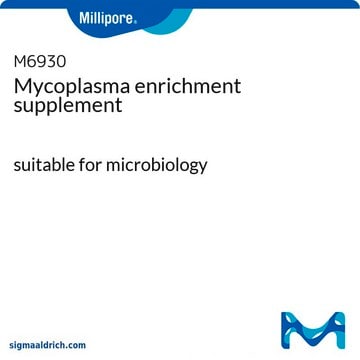T8782
Tryptose Phosphate Broth
buffered powder, Microbiologically tested.
Sinônimo(s):
Tryptose Broth
About This Item
Produtos recomendados
forma
buffered powder
qualidade
Microbiologically tested.
Categorias relacionadas
Descrição geral
Aplicação
- of Leibovitz L-15 medium for the culture of BME26 tick embryo cell line
- of M199 medium for the preparation of chick embryo fibroblasts (CEFs)
- of Glasgow′s minimum essential medium (GMEM) for culturing baby hamster kidney (BHK-21) before transfection
Ações bioquímicas/fisiológicas
Componentes
geralmente comprado junto com este produto
Código de classe de armazenamento
11 - Combustible Solids
Classe de risco de água (WGK)
WGK 1
Ponto de fulgor (°F)
Not applicable
Ponto de fulgor (°C)
Not applicable
Equipamento de proteção individual
Eyeshields, Gloves, type N95 (US)
Certificados de análise (COA)
Busque Certificados de análise (COA) digitando o Número do Lote do produto. Os números de lote e remessa podem ser encontrados no rótulo de um produto após a palavra “Lot” ou “Batch”.
Já possui este produto?
Encontre a documentação dos produtos que você adquiriu recentemente na biblioteca de documentos.
Os clientes também visualizaram
Artigos
Detect mycoplasma contamination in cell culture through the PCR, DNA stain, or culture tests. Discover mycoplasma prevention, elimination, and detection kits.
Nossa equipe de cientistas tem experiência em todas as áreas de pesquisa, incluindo Life Sciences, ciência de materiais, síntese química, cromatografia, química analítica e muitas outras.
Entre em contato com a assistência técnica













